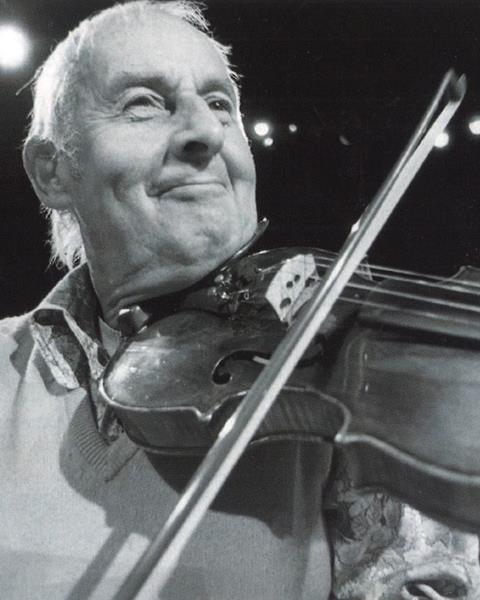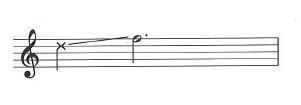Julie Lyonn Lieberman describes how different slides can enhance your string playing, from oozing your way in the true blues style to the Klezmer 'bend'

Discover more Technique in The Strad Playing Hub
The slide is a technique in which the player places his or her finger below or above the intended note and then glides that finger into the desired pitch. The timing of the slide usually anticipates the beat and the moving finger then lands on the pitch in time for a down-beat or up-beat.
Variations in distance, speed of motion and bow pressure help to create different-sounding slides. For example, you can travel an eighth-tone, quarter-tone, whole tone and on up to an octave or beyond, depending on the effect you wish to create. You can vary the sound of the slide by travelling from one discriminate pitch to another, or start the slide with lighter bow pressure so that the pitch is indiscernible and the effect is highlighted through a gladual intensification in bow pressure.
If you glide your finger slowly versus quickly you can vary the sound even more. These techniques are more effective if vibrato is only added once you land on the desired pitch (if the style calls for vibrato).
SLIDE NOTATION
Slides can be as simple or complex as you want to make them. In notation, we generally use a straight line to indicate the slide and assume that the finger used to initiate the pitch will be the same one that slides up to the next notated pitch, unless indicated otherwise.

Slide notation is rather vague when it comes to representing the speed of the moving finger and does not indicate bow pressure, which can change the characteristics of the slide considerably.

The player has to calculate these based on the rhythmic content of the melodic line or the requirements of the genre, and then the tempo of the slide will fall naturally into place. For instance, in the above example the slide will move quickly.
We can assume that the player would move more slowly if that same slide is notated as in the example below.

Try playing this with a light touch and then with increased bow pressure to compare the sound possibilities.
Read: Lost arts of string playing: Unlocking the secrets of the past
Read: How to shift smoothly and cleanly by cellist Jeffrey Solow
Read more Technique in The Strad Playing Hub
BLUES AND JAZZ SLIDES
Blues fiddler Papa John Creach liked to add tremolo to some of his slides.

When presented with this phrase, a player unfamiliar with Creach's style might assume that this measure requires a held pitch followed by a quick, light slide. In fact, you can use the full three beats to ooze your way up. Since slides can be found in styles that invite individual interpretation, slide notation should be interpreted as a general map unless you are trying to emulate a specific player's sound.
Rock and blues fiddler Don 'Sugarcane' Harris would spice up his solos with a trill on minor thirds, which he would slide up and down the fingerboard.

When reading a jazz string chart you will sometimes come across an 'x' followed by a line leading to a notated pitch.

This indicates an indiscernible start-point used to initiate the shift. It means that the slide will start in that general pitch vicinity with a light touch in both the left and right hands, followed by a gradual deepening of pressure as the slide moves to the desired pitch. You can hear this technique used in Gypsy fiddling as well.
In blues fiddling, heavy bow pressure coordinated with a slow ooze out of or up into pitch can be found throughout the genre. The example below is from fiddler Lonnie Johnson.

He was also known to lean his finger back and up again. Try the passage from this example both ways. First, slide a half step below and back on each figure, and then try leaning back and up. Repeat each approach with an increase in bow speed and pressure coordinated with the lower pitch within each slide or lean.
THE KLEZMER 'BEND'
In Klezmer fiddling, a lean backwards is called a 'bend'. The bend (indicated by a 'B') accompanied by a 'krechtz' (a grace note articulated with the pinky indicated by a 'K') as the finger returns to pitch helps to create a delicious wailing sound. The example below is from the tune L'Hu Neroneno as taught to me by Klezmer fiddler Alicia Svigals.

In addition to the scoop and the bend, you can slide down out of a note or spill down out of it by using an intermediary finger.

EAST INDIAN SLIDES
There are also numerous variations of sweeping, zig-zagging slides found in the East Indian violin style (part of a series of left-hand ornaments too numerous to count, known as 'gamakas'). Almost impossible to notate, they are taught by ear.

IMPROVING TECHNIQUE
Many string players, when first beginning to experiment with slides, tend to default to a medium tempo, medium length slide up into the pitch on the downbeat, usually on the first beat of the measure, again and again without variation. Overjoyed to discover a new sound - one that is associated with alternative string playing - they often do not notice the repetitious aspect of how they are applying this technique. Once you have practised the slide techniques outlined above, make sure you vary timing, distance and placement within the rhythmic phrase.
There is yet another method you can use to produce a wider range of sounds. The brain's right motor cortex, which governs muscle movements in the left side of the body, is connected via a gate called the corpus callosum to the left motor cortex. This means that if you lighten the pressure of the moving finger, your bow arm will automatically lighten as well - unless you direct it otherwise. If you pay attention to this brain default system, you can use it or consciously fight it. Variations in left- or right-hand pressure can add a completely new spectrum of sound possibilities. To explore these possibilities, choose a finger and experiment with creating first equal pressure in both hands as you slide, and then opposite activity: press with the bow while the left hand is light and vice versa.
Practising shifting techniques will also heighten control over finger pressure. In general, many players use far more pressure than they need. You won't be able to budge if you are busy drilling a hole into your fingerboard! The advantage of learning how to modify finger pressure whenever and however you wish can have an enormous impact on agility for speed and even freedom of motion for vibrato. The very act of lightening finger pressure will facilitate a release in your thumb muscle as well.
This article was first published in The Strad's July 2005 issue.
Read: How to shift correctly on the violin
Watch: Masterclass: The Swan by Saint-Saëns
Discover more Technique in The Strad Playing Hub











































No comments yet